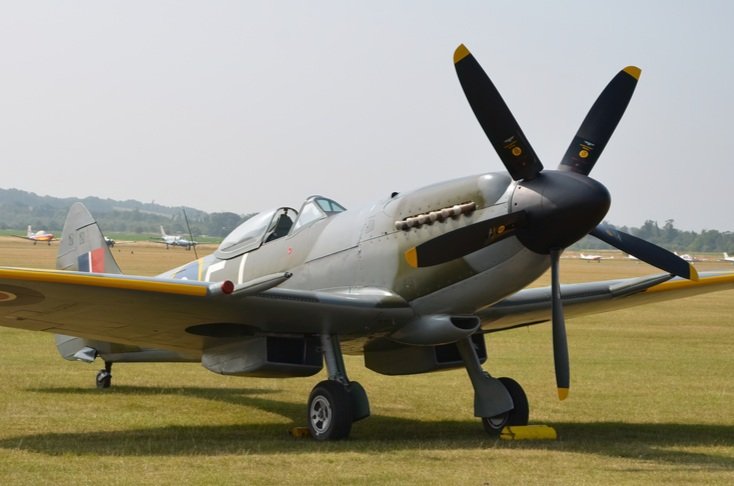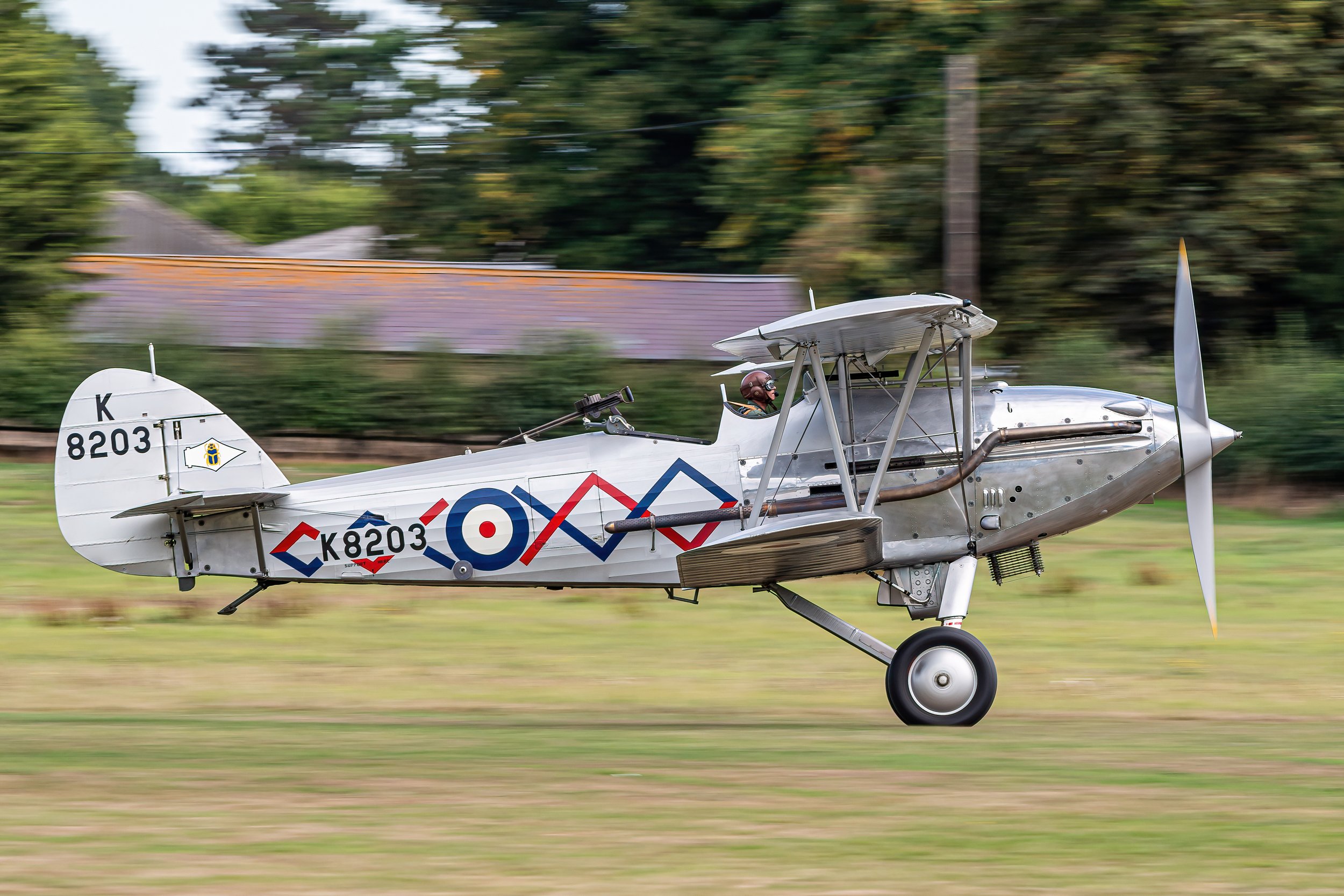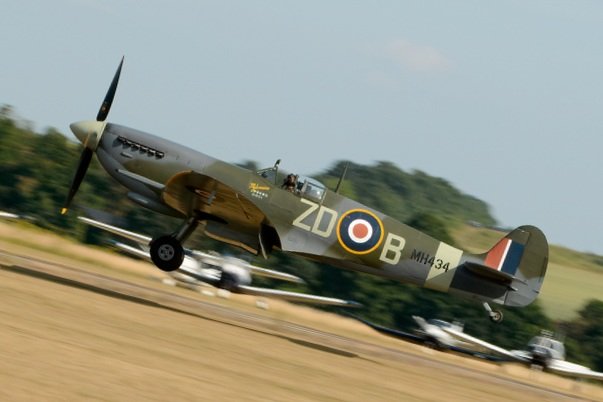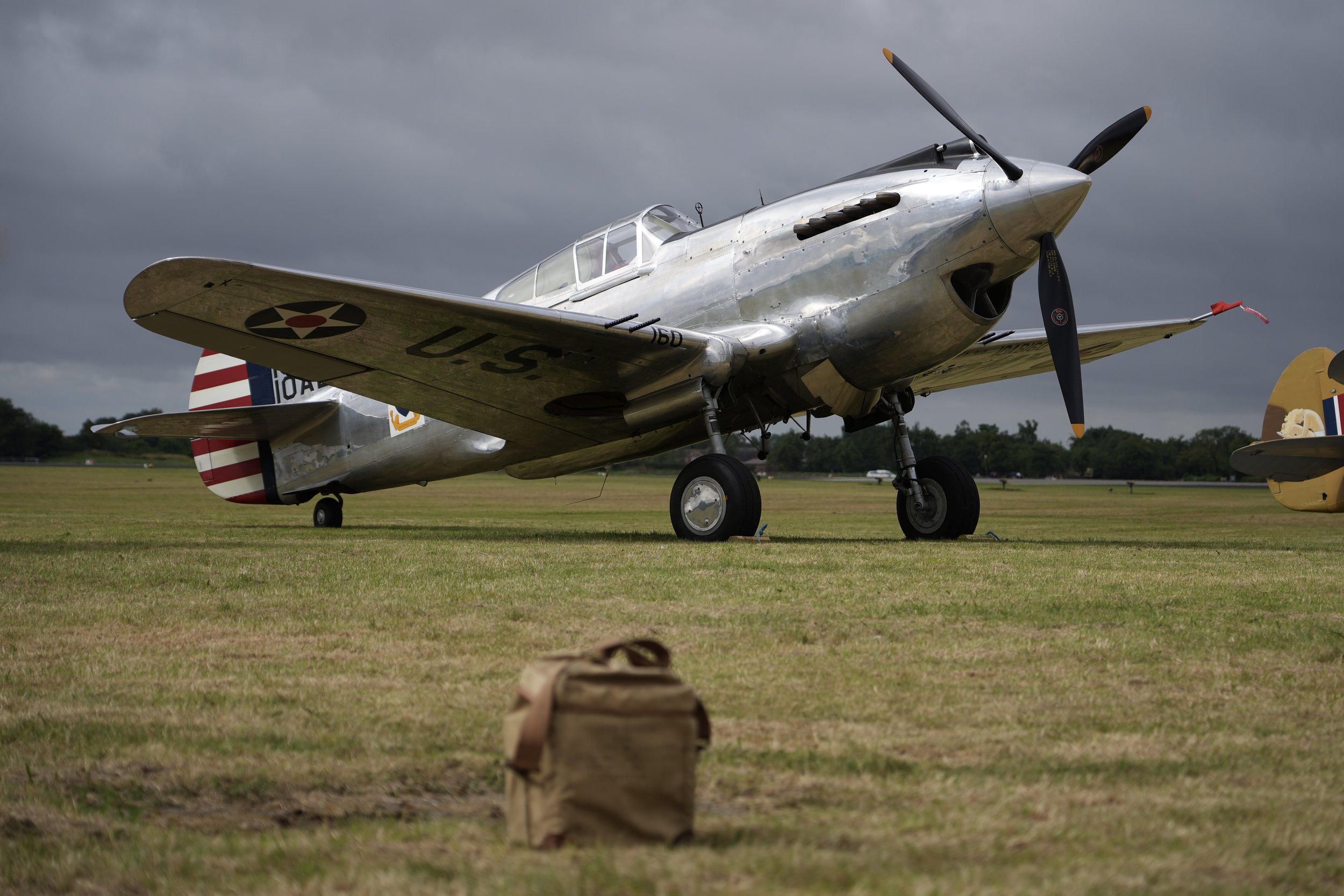Spitfire G-BKMI
Year built
1944
Aircraft
Spitfire Mk.VIIIc
Base
Duxford Airfield
Spitfire VIII ‘MT928’ (G-BKMI) is a rare surviving mark of Spitfire, with just two single-seat MkVIIIs remaining in airworthy condition anywhere in the world. This was an important variant of the Spitfire as it was one of the first to be fitted with the two-speed supercharged Merlin 61 which significantly improved high-altitude performance. Being a larger engine, the fuselage required strengthening and the fuel capacity was increased. There were also additional visual changes to the VIII which were incorporated on many later Spitfire marks such as a retractable tailwheel and a larger broad chord rudder. Some 1657 MkVIIIs were eventually produced, however the speed of development of the type meant the improved MkIX soon came along and ended up being produced in far greater numbers. The first squadrons were equipped with the MkVIII in June 1943 once the decision was made to employ the MkVIII in the Far East and Mediterranean theatres.
This Spitfire, built as MV154, rolled off the Southampton production line in 1944 and was delivered to 6 Maintenance Unit for acceptance and completion. The pilot for that delivery flight was Air Transport Auxiliary (ATA) member Mary Wilkins. In September 1944 MV154 was shipped to Australia, arriving 2 months later. Many MkVIIIs served with the Royal Australian Air Force and this was due to be one of them. The aircraft never left its shipping crate with the end of hostilities, and the airframe ended up being stored until 1949 when it was moved to the Sydney Technical College for instructional purposes. 13 years later the fighter passed into the hands of Anthony ‘Titus’ Oates who planned to restore the Spitfire to flight. Sadly, this fell through and MV154 moved to Sid Marshall’s museum in Bankstown, New South Wales for many years. In 1979, the airframe was acquired by British warbird pilot and racing driver Robs Lamplough and returned to the UK. A full rebuild to airworthiness followed and on 28th May 1994, the MkVIII took to the skies again from Filton Airfield, by now painted in the markings of MT928 with its distinctive red code letters.
G-BKMI appeared at numerous air shows over the following years, also seeing activity on the big screen with temporary colours applied for appearances in the productions Pearl Harbor and Dark Blue World. The aircraft was also reunited with Mary Wilkins, now Ellis (who had delivered what was MV154 all those years earlier) on several occasions. This was made even more special by the fact Mary’s original signature from wartime remained in the cockpit – the only signature she had applied to an aircraft in her entire flying career. For this to be on a remaining airworthy Spitfire and still visible was fantastic and a testament to the aircraft being delivered virtually straight into storage. Mary was invited to re-sign the Spitfire upon its return to flight. This relationship between MT928 and Mary Ellis continued for many years – in 2010 the aircraft was purchased by Maxi Gainza. Maxi based and flew the aircraft in Germany however he still dropped into Mary’s local airfield on the Isle of Wight whenever an opportunity presented itself so she could be reunited with her steed of all those years earlier. Sadly, Mary passed away in 2018 and so the Spitfire now flies as a tribute to her and all those who flew for the ATA – they were flying in any weather in often unfamiliar types with no armament – a necessary part of the war effort whose story needs preserving. In recent years, this MkVIII was one of the main examples featured in the Spitfire feature documentary which drew much acclaim. Maxi Gainza was invited to Duxford air shows with the airframe on several occasions and gladly presented the aircraft to British audiences. In 2019, Maxi opted to keep the Spitfire in the UK, where it was returned to the UK civil register and maintained by the Aircraft Restoration Company who operate it today on his behalf.
| Back to Top |
Supermarine Spitfire Mk.VIIIc
The Supermarine Spitfire is a British single-seat fighter aircraft that was used by the Royal Air Force and other Allied countries before, during, and after World War II. Many variants of the Spitfire were built, using several wing configurations, and it was produced in greater numbers than any other British aircraft. It was also the only British fighter produced continuously throughout the war. The Spitfire continues to be popular among enthusiasts; nearly 60 remain airworthy, and many more are static exhibits in aviation museums throughout the world.
The Spitfire was designed as a short-range, high-performance interceptor aircraft by R. J. Mitchell, chief designer at Supermarine Aviation Works, which operated as a subsidiary of Vickers-Armstrong from 1928. Mitchell pushed the Spitfire's distinctive elliptical wing with cutting-edge sunken rivets (designed by Beverley Shenstone) to have the thinnest possible cross-section, helping give the aircraft a higher top speed than several contemporary fighters, including the Hawker Hurricane. Mitchell continued to refine the design until his death in 1937, whereupon his colleague Joseph Smith took over as chief designer, overseeing the Spitfire's development throughout its multitude of variants.
During the Battle of Britain, from July to October 1940, the public perceived the Spitfire to be the main RAF fighter, though the more numerous Hurricane shouldered a greater proportion of the burden against Nazi Germany's air force, the Luftwaffe. However, Spitfire units had a lower attrition rate and a higher victory-to-loss ratio than those flying Hurricanes because of Spitfire's higher performance. During the battle, Spitfires were generally tasked with engaging Luftwaffe fighters—mainly Messerschmitt Bf 109E-series aircraft, which were a close match for them.
After the Battle of Britain, the Spitfire superseded the Hurricane to become the backbone of RAF Fighter Command, and saw action in the European, Mediterranean, Pacific, and South-East Asian theatres. Much loved by its pilots, the Spitfire served in several roles, including interceptor, photo-reconnaissance, fighter-bomber, and trainer, and it continued to serve in these roles until the 1950s. The Seafire was a carrier-based adaptation of the Spitfire that served in the Fleet Air Arm from 1942 through to the mid-1950s. Although the original airframe was designed to be powered by a Rolls-Royce Merlin engine producing 1,030 hp (768 kW), it was strong enough and adaptable enough to use increasingly powerful Merlins and, in later marks, Rolls-Royce Griffon engines producing up to 2,340 hp (1,745 kW). As a result, the Spitfire's performance and capabilities improved over the course of its service life.
The Spitfire MkV was one of the most successful ‘stop-gaps’ ever introduced into Royal Air Force Service. Over one hundred and forty RAF squadrons operated the type. It served on all battlefronts and was supplied to nine other countries including the Soviet Union and the United States.
During 1940 the Spitfire MkI and MkII barely maintained superiority over the Messerschmitt Bf109E so the Air Staff turned their attention to the question of a replacement. Their preferred successor was the MkIII, fitted with a Merlin XX engine and incorporating a new wing design.
Realising it would take time to tool up for a new production aircraft and because of problems with the Merlin XX, the Air Ministry asked Rolls-Royce, as an interim measure, to install the Merlin 45 engine in the Spitfire MkI airframe. Between 1941 and 1943 over 6500 of this MkV version were produced. The spitfire MkIII never did go into production but some of the new design features intended for it were incorporated into the MkV
By 1944 only five squadrons remained in service. Even so, two Spitfire MkV squadrons provided gunfire direction on 6 June 1944 for naval units off the D-Day beached of Normandy.
| Back to Top |
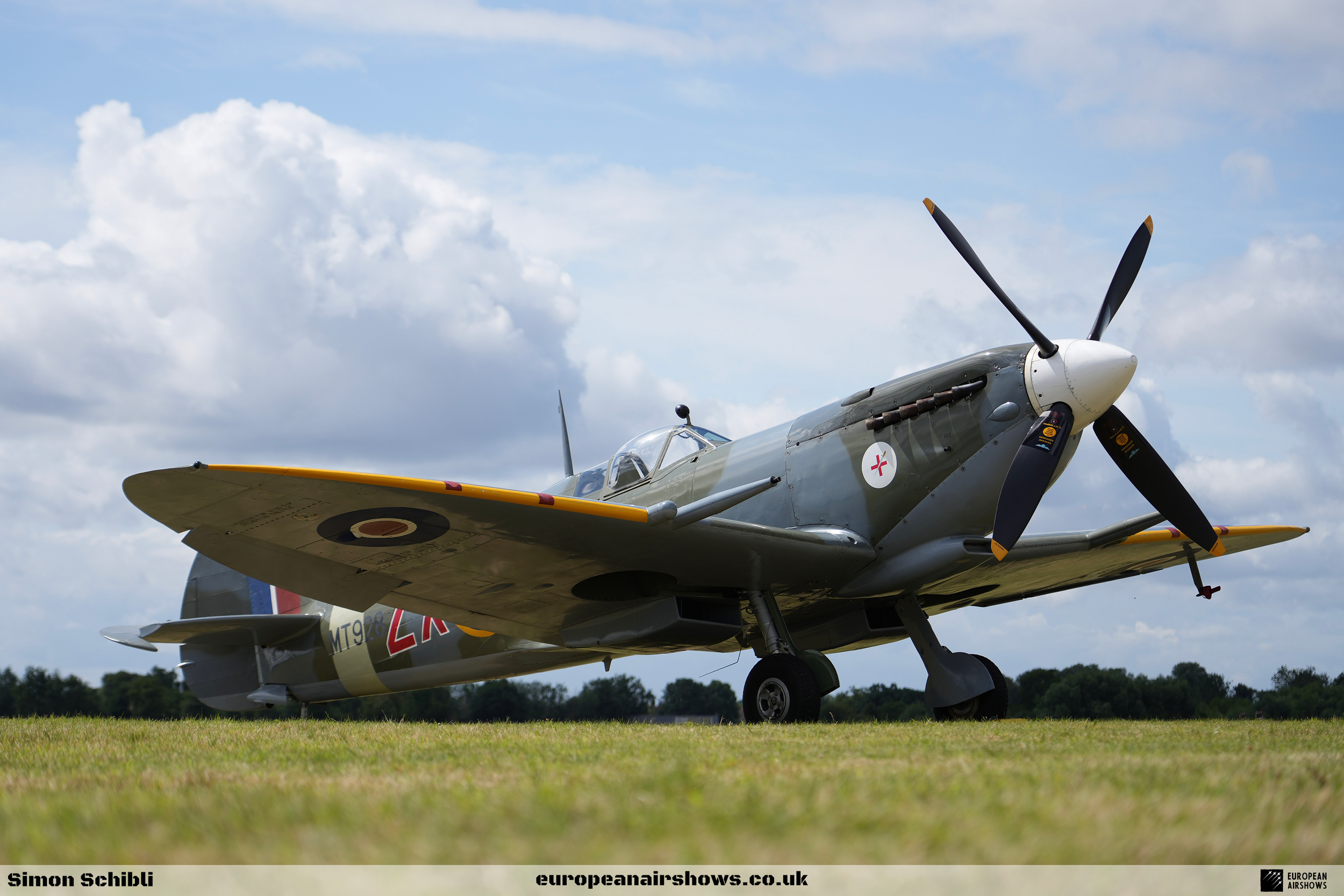

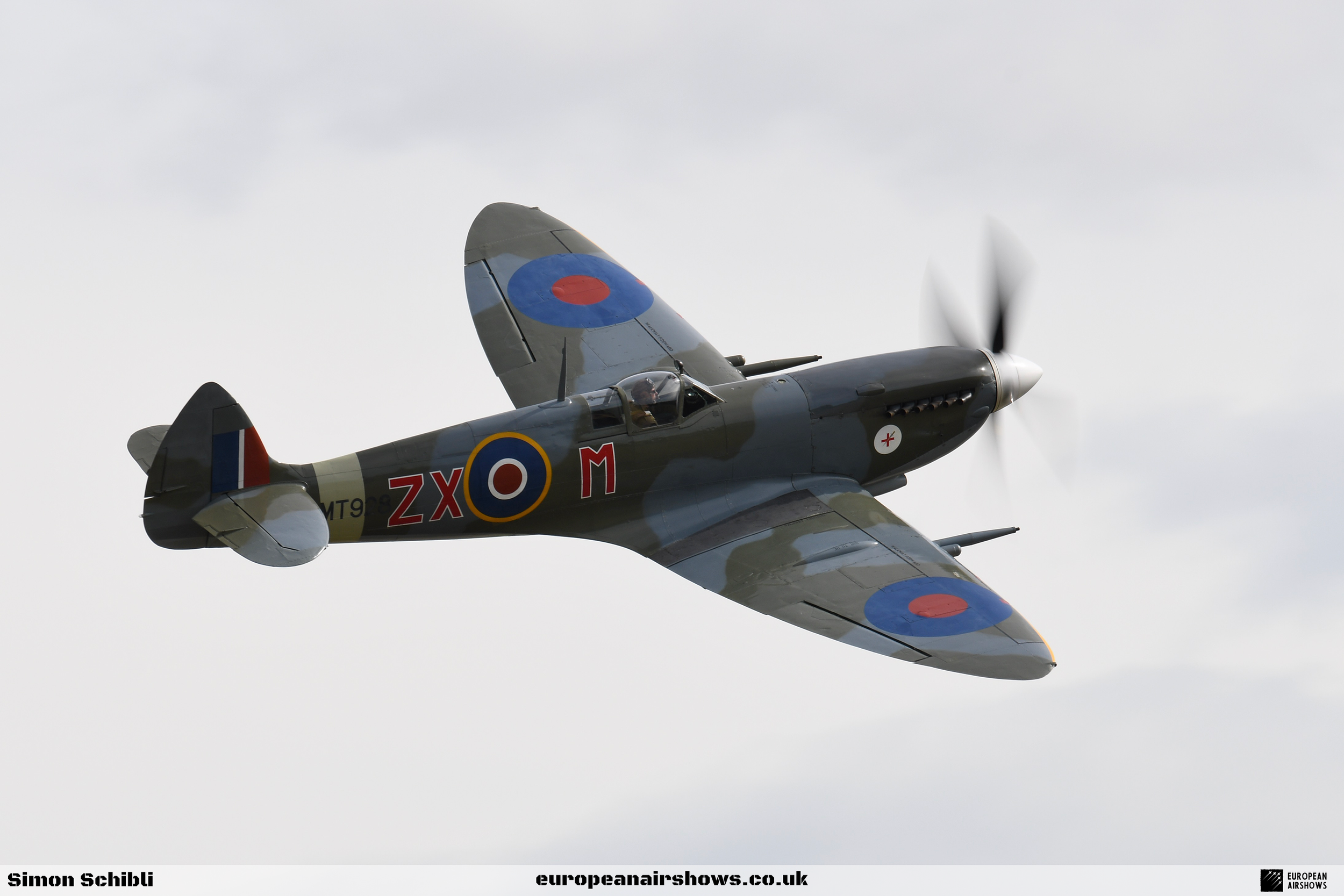
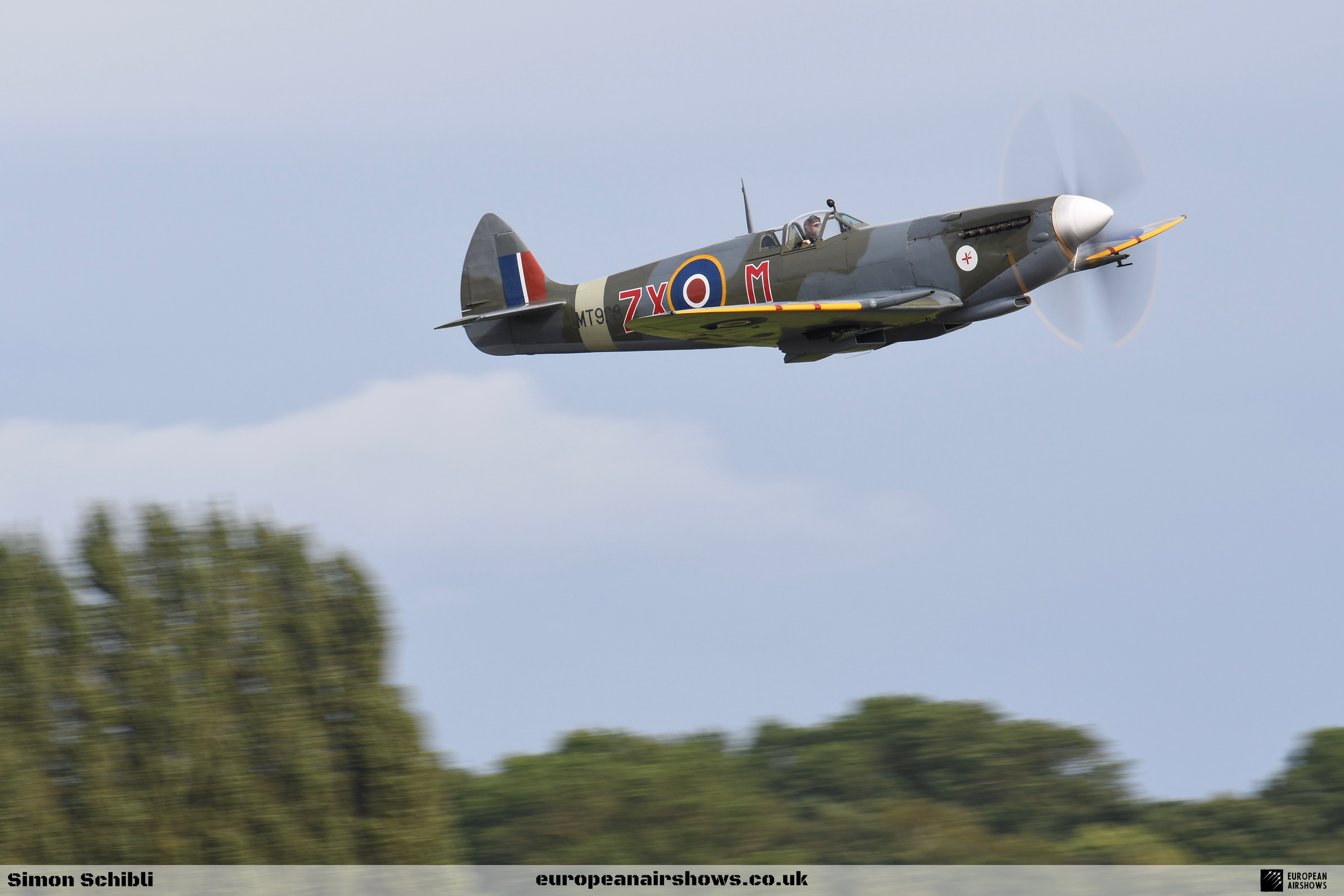
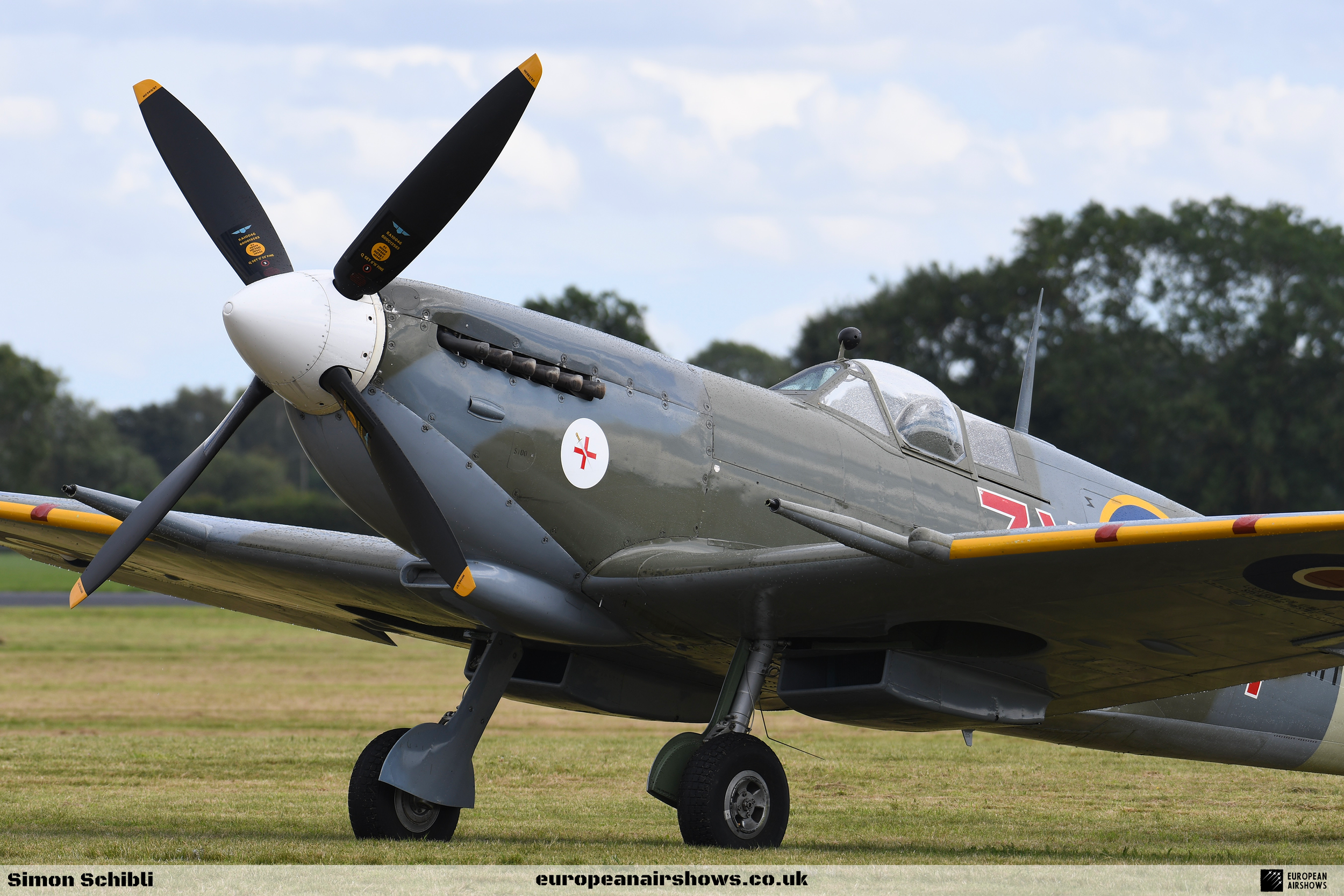
| Back to Top |






















